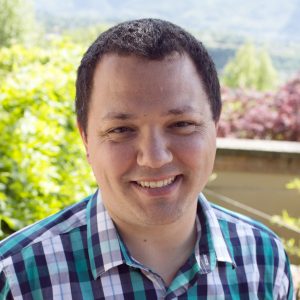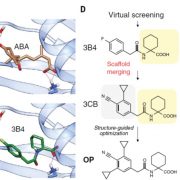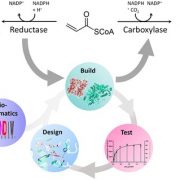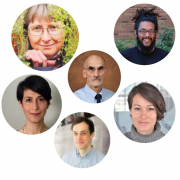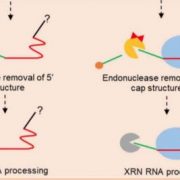Interviews with synthetic biologists: Paul South
Synthetic biology is a set of tools, a way of thinking, the integration of engineering principles into biological sciences, and potentially the biggest opportunity for advances in plant sciences since PCR. Yet many struggle to define it, and fewer still grasp its full potential.
Now, four early-career synthetic biologists have conducted a set of video interviews with leaders in the field of plant synthetic biology, in both academic and industrial arenas.
In the seventh of this series Interviews with Synthetic Biologists, Henrik Toft Simonsen, Associate Professor in the Department of Biotechnology at the Biomedicine Technical University of Denmark, interviews Paul South.
Paul South, PhD is a postdoctoral researcher at the University of Illinois. His expertise covers molecular genetics, molecular biology and biochemistry. More specifically, he focuses on epigenetic regulation of gene expression. For the RIPE project, he is improving photorespiratory bypass by identifying and down-regulating chloroplast inner membrane proteins necessary for export of photorespiratory products, such as glycolate. Paul earned his bachelor’s degree in biology from Ursuline College and went on to receive his doctorate in biochemistry from Purdue University. He will soon be starting a new job as Assistant Professor of Plant Physiology at Louisiana State University.
Excerpts from the interview, lightly edited
What is your project about so people can understand it a bit more?
The RIPE project aims to use photosynthesis as a stepping stone to increase crop productivity with the end goal of increasing food security around the world.
My work is focused on photorespiration. In C3 plants like rice, wheat, and soybeans approximately 20% of the time rubisco will grab oxygen from the atmosphere instead of carbon dioxide. When this happens plants have evolved an elaborate process to deal with byproducts that can’t be used in photosynthesis. As much as 50% of the energy from photosynthesis could go towards the process of photorespiration. I am looking to make a more efficient process for plants.
Excerpts from the interview, lightly edited
What do you see as the big differences between Synthetic biology vs Biotechnology?
The main difference tends to start with scale. Rather than applying one or two genes synthetic biology allows a more integrated approach.
Here we have decided to take a more integrated approach. Knowing that there are over 170 steps in photorespiration we used computer modeling to work in designs that we could then test in plants. I took three different designs and then increased the complexity by using RNA interference to shut down the native photorespiration pathway and wanted to test those all simultaneously. The main difference between genetic engineering and synthetic biology is the ability to take an engineering approach and increase scale to test multiple variations and the ability to test multiple genes instead of maybe one or two genes at a time.
Excerpts from the interview, lightly edited
In your own research, do you often work with the integration of several genes and multiple promoters and terminators or do you mainly use single gene analyses?
We’ve been doing multigene transformation when we started we worked with others to decide what type of systems would be most effective. We landed on golden gate cloning. With that, we have been able to clone and transform as many as 7 genes to transform simultaneously. This has also made it possible to transform larger DNA constructs. The largest I’ve cloned was 36 KB in size and was readily able to transform as well. This has really sped up the process of getting entire biochemical pathways into plants.
Excerpts from the interview, lightly edited
In regards to photorespiration, what do you think will be the biggest challenge in the next 1-2 years?
Some of the biggest challenges in terms of photorespiration will be getting these into food crops. Traditional biotechnology work really takes large investments and as much as 20 years to make sure the technology will be viable in areas around the world, but also in meeting regulations to make sure that these products are safe and environmentally viable.
The biggest bottleneck to plant synthetic biology comes from the ability to transform these systems into crop plants. Tobacco is a very easy system to work on, but other food crops are more difficult to move this into. Improving the technology and working out the systems and regulations so that they are in the hands of farmers is going to be our biggest challenge.
Excerpts from the interview, lightly edited
Where do you see potential in terms of food and agriculture?
I think the real potential in terms of food and agriculture is not only promoting growth in terms of using photosynthesis traits, but also moving away from chemical application model of agriculture, reducing herbicides, and pesticides and hopefully reducing the use of chemically produced fertilizer. Those are the sort of things that will be beneficial to the public and I think will start with public acceptance of reducing chemical usage on our plates.
Henrik Toft Simonsen, received his PhD from the University of Copenhagen and is currently an Associate Professor in the Department of Biotechnology at the Biomedicine Technical University of Denmark. Henrik Toft does research in Phytochemistry, Biochemistry and Biotechnological use of Photosynthetic cells. Their current project is ‘Engineering bryophytes to produce natural products. Follow him on Twitter @HTSBiotechMoss
Previously in this series:
- Steven Burgess interviews Professor Jennifer Nemhauser, University of Washington.
- Steven Burgess interviews Michael Mendez, Renew Biopharma.
- Steven Burgess interviews Matthew Mattozzi, Conagen Inc.
- Jenna Gallegos interviews Tobias Erb, Max Planck Institute for Terrestrial Microbiology in Marburg
- Jenna Gallegos interviews Guillaume Barbier, Joyne Bio.
- Jeanna Gallegos interviews Karsten Temme
Stay tuned for more in this series of Interviews with Synthetic Biologists.


